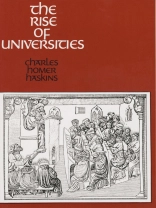The origin and nature of the earliest universities are the subjects of this famous and witty set of lectures by the man whom eminent scholars have called ‘without exaggeration… the soul of the renascence of medieval studies in the United States.’ Great as the differences are between the earliest universities and those of today, the fact remains, says Professor Haskins, the ‘the university of the twentieth century is the lineal descendant of medieval Paris and Bologna.’ In demonstrating this fact, he brings to life the institutions, instruction, professors, and students of the Middle Ages.
Tabela de Conteúdo
Part I: The Earliest Universities
Introduction
Bologna and the South
Paris and the North
The mediaeval inheritance Part II:The Mediaeval Professor
Studies and text-books
Teaching and examinations
Academic status and freedom Part III: The Mediaeval Student
Sources of information
Student manuals
Student letters
Student Poetry
Conclusion Bibliographical Note
lndex
Sobre o autor
Charles Homer Haskins was born in Meadville, Pennsylvania, in 1870. He taught at the Johns Hopkins University, the University of Wisconsin, and Harvard University, where he also served as Dean of the Graduate School of Arts and Sciences between 1908 and 1924. His books include Norman Institutions (1918), Studies in the History of Science (1924), The Renaissance of the Twelfth Century (1927), and Studies in Medieval Culture (1929). He died in Cambridge, Massachusetts, in 1937.












